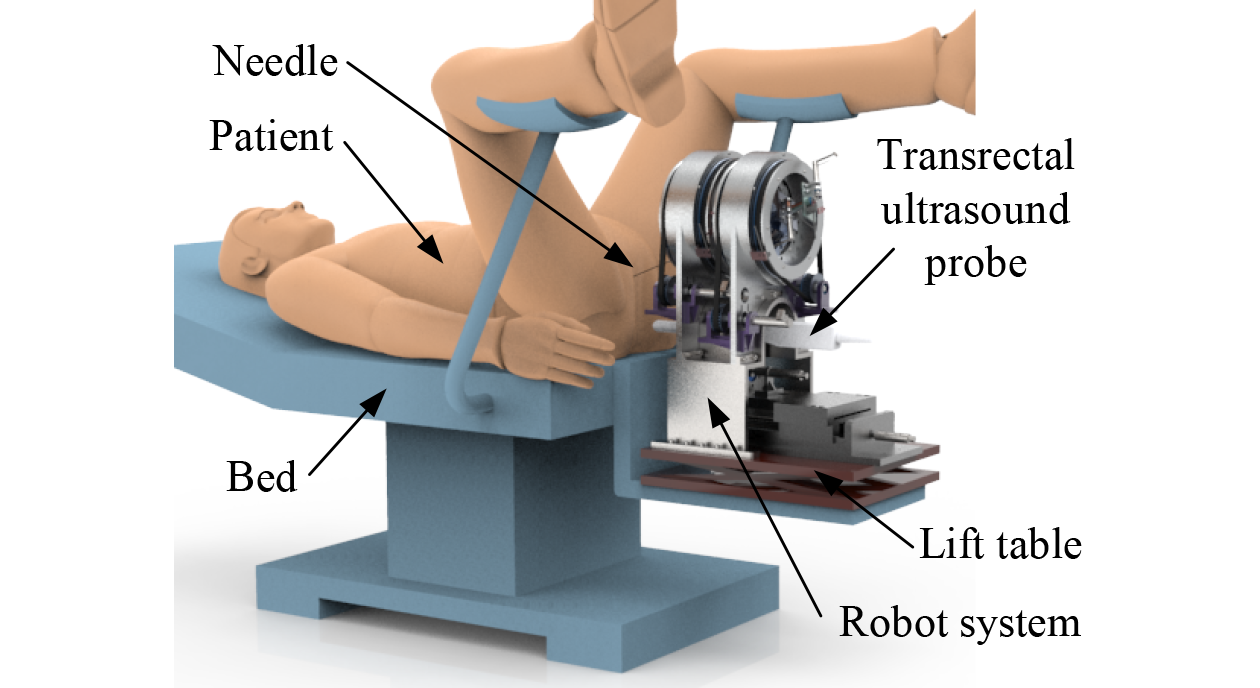Though several researchers tried to develop a control method for a system with unknown parameters [
10], identifying robot system parameters by calibration is usually fundamental for effective, intuitive robot control [
11]. Calibration contains two steps: kinematic modeling, and parameter identification and compensation [
12]. Many mature methods are used for serial robot calibration, but the situations for parallel structure calibration are much more complicated [
13]. Parallel structure models vary and are difficult to be summarized as a universally applicable model. The kinematic parameters of parallel structures are coupled nonlinearly, and the end pose is affected by the aggregation of manufacturing and assembly errors. Methods based on the Denavit–Hartenberg (DH) models are the most extensively used approaches for kinematic modeling in real application [
14,
15]. The modified DH and Gauss–Newton method were applied to calibrate the parallel manufacturing machine [
16]. To distinguish errors from different sources, a generalized Jacobian method was proposed [
17]. The error model of the parallel mechanism was built by screw theory in Ref. [
18], and the dual-vector space method was applied to distinguish errors from different sources. However, this method was based on a one-order linearization. Reference [
19] designed a camera calibration technique by collecting data of a flat pattern in several poses and applied the Levenberg–Marquardt algorithm as the optimization method to identify the parameters; however, this method may fall into local optimum. Reference [
20] identified the structural parameters of a 3-DOF overconstrained parallel robot by the nonlinear least-squares method and the nongeometric parameters by the trained neural network method. Reference [
21] developed a local convergence method and applied Tabu Search to calibrate Gough platform. Several novel approaches are flexible and effective for solving traditional problems in different regions [
22,
23]. Particle swarm optimization (PSO) is a nonlinear optimization method with rapid calculation speed [
24] and can be applied to solve optimization problems in parameter identification [
25,
26]. A hybrid algorithm based on neural network and PSO was applied for industrial robot kinematic parameter identification [
27]. Reference [
28] deployed a ball–plate-based calibration approach and applied PSO for parameter identification. The PSO method was intuitive and effective, but the calculation cannot achieve real-time supervision and was stochastic and easily fell into local minimum [
29]. Calibration methods based on parameter characteristics were proposed to increase identification accuracy. The global error transformation index was related to the global maximum pose error, and genetic algorithm based on the index was applied for 3-DOF parallel robot parameter optimization [
30]. Sensitivity-based parameter calibration was proposed for limited observations, and the results showed better parameter estimation and prediction accuracy compared with the least squares calibration method and the Bayesian calibration method [
31]. Reference [
32] performed optimization and calibration-based model validation in a sequence of small domains in the entire design space and applied Gaussian distribution and maximum likelihood estimation to calibrate the prediction model. Reference [
33] proposed a calibration method focused on the least error sensitive regions of parallel kinematic machines.






















